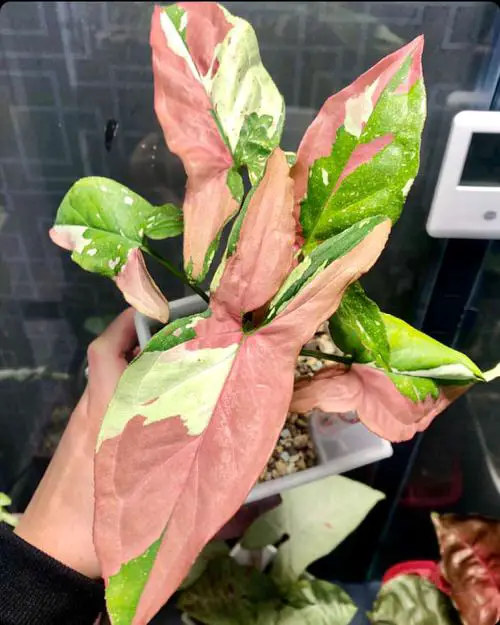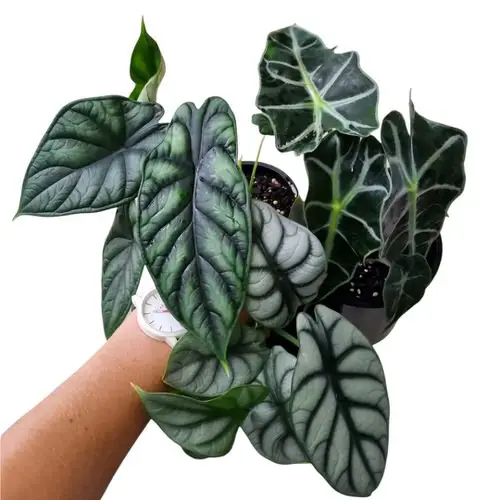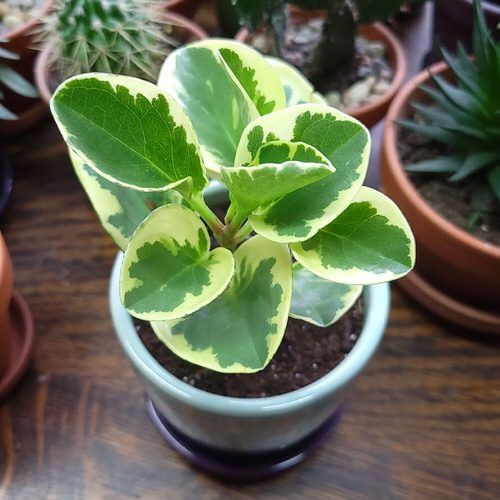Do you want to make the colors pop on your houseplants? Follow these super Tricks to Get More Variegation on Plants and make them look vivid!

Check out some beautiful plants with pink and green variegated leaves here
Commercial Ways to Change Plant Variegation
Using chemical mutagens such as Ethyl methanesulfonate, exposing the plants to ionizing radiation like X, and Gamma rays, along with transposing genes from one plant to another, can also add colors and variegation to them.
Inducing mutations in the plants also lead to variegation due to their unique feature of exhibiting both normal and defective plastids in different sectors of the same plant tissue.
But these practices are generally used by some commercial growers, and they are not feasible or recommended for the usual houseplant growers.
Tricks to Get More Variegation on Plants
1. Light–Not Too Much, Not Too Low

One of the most important factors for variegation is bright light. It promotes good growth and renders deep hues on the leaves.
It is essential that you find the right balance of light and shade. Keeping the plants in too much sun can harm the delicate foliage.
So, what could be the best bet? Simple. Ensure the plant gets bright and indirect light for most of the day. Find the sunniest window in your house and keep the plant 3-4 feet away from it. This will help it bask in the bright light, and you’ll not have to worry about the foliage getting damaged.
Note: If you see the colors on the foliage getting faded, it indicates that the plant is not getting enough light. Similarly, if you see the leaves getting brown or showing signs of burns, then it means that the plant is getting too much sun.
2. Prune Non-Variegated Foliage
When you grow plants with variegated foliage, they produce some leaves that don’t have colors. To ensure your plant pops with vivid hues, you can snip away the foliage that has one color. This will also prompt the plant to grow more leaves.
However, as green leaves promote and balance photosynthesis, you have to make sure that you are not snipping all of them away as it will cause the plant to wilt and die.
Keep the variegated ones and snip the non-colored ones, and soon you will have a plant full of variegated leaves.
3. Use Low-Nitrogen Fertilizer

Plants need nitrogen, but too much of it can cause the outgrowth of chlorophyll, which will make the leaves more on the greener side, decreasing the overall variegation.
The best bet is to use a high-quality potting mix and a balanced liquid fertilizer, diluted to half of its strength, once in 4-6 weeks. Avoid feeding the plant too much if it shows promising signs of growth.
Check out some homemade liquid fertilizers here
4. Preserve a Constant Temperature
You can stop the loss of variegation by protecting the plants from rapid temperature changes, as it can shock them, resulting in loss of colors and sheen.
Constant temperature is a must for variegation, and it is pretty easy to manage temperature indoors than outdoors. Keep the plants away from A/C or heating vents and make sure they are not exposed to any place where they can encounter a sudden rise or dip in temperature.
5. Start Cuttings with Varigated Leaves

Cut a variegated stem instead of a green one for planting. If you want the plant to be more variegated, put 3-5 cuttings in the same large pot to make it appear bushy and full of colors! This guarantees a new plant with the same variegation as the leaves.
6. Keep the Foliage Clean

One of the most crucial factors that determine the best colors on the leaves is their ability to absorb light. Variegated plants have shiny foliage that’s prone to attracting dirt and debris.
Over time, the leaves get a thin layer of dust on them, which greatly impacts their ability to absorb sunlight, affecting plant growth and making the colors look dull.
It will be good to wipe the leaves with a damp and soft cotton cloth once in 7-8 days. This will keep their surface clean, helping them absorb the right amount of sunlight, ultimately giving them their best colors.
Fun Fact: Clean leaves appear more colorful than they actually are!
Here are some DIY leaf shiner recipes for you
7. Be Careful While Watering

Plants require sufficient water to keep healthy and form chlorophyll. Too much water can trick the plant into producing more chlorophyll, which will fade its non-green colors.
Similarly, too little water will make the foliage crisp, lose of colors, and it weakens.
It will be best to make a watering schedule according to the plant variety and stick to that plan. The best method to follow is to keep an eye on the topsoil—when it feels dry to touch, water the plants.
Check out some sure shot signs of underwatered plants here
The Bottom Line
Some plants get variegation when the leaves are young, like the Philodendron Birkin, while some others get more colors as the leaves mature, like the variegated rubber plant or pothos.


